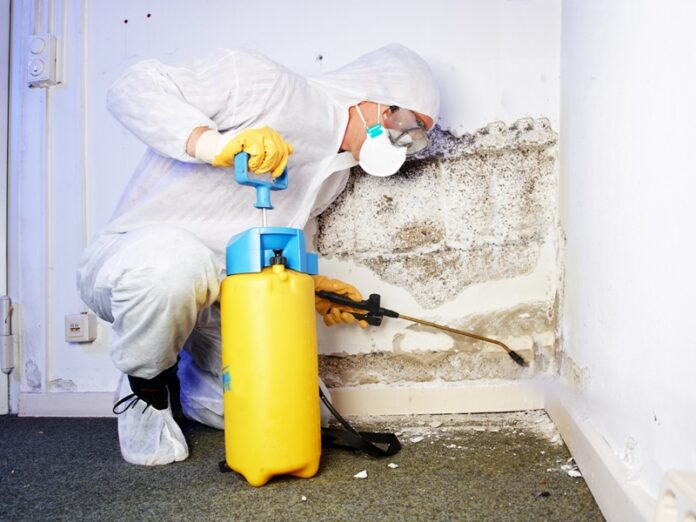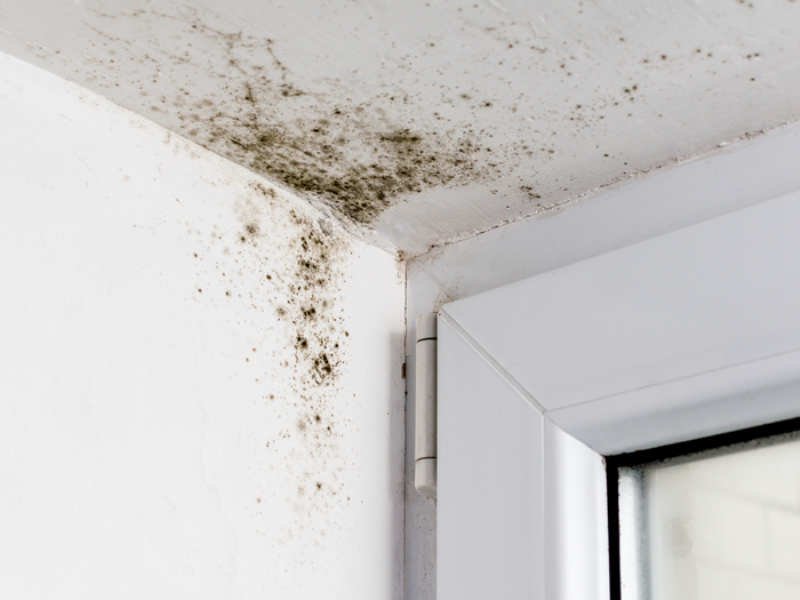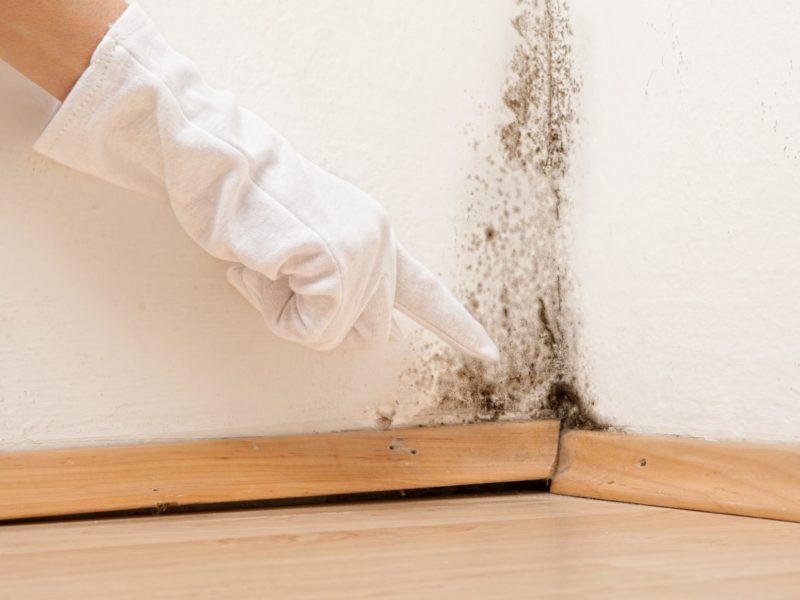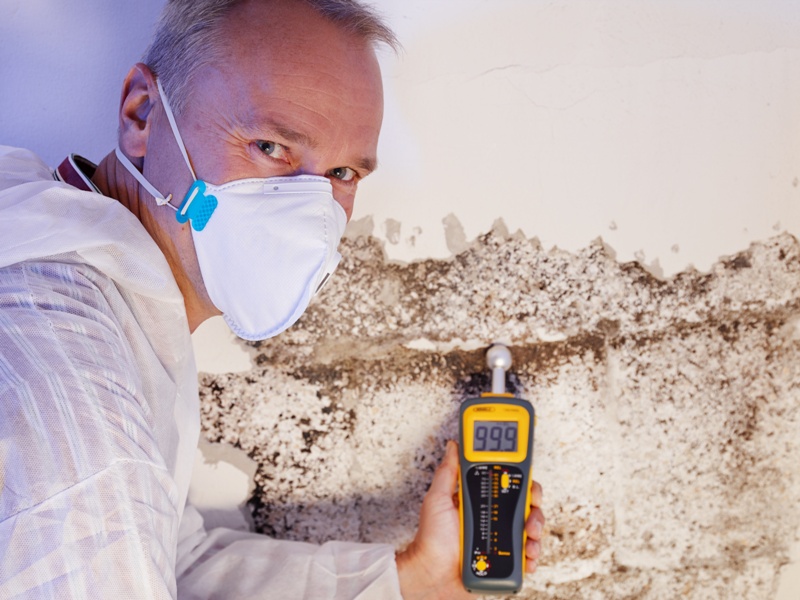Mold in the house is dangerous for everyone who lives in it. As a matter of fact, it has become one of the damaging toxins that people face on a day-to-day basis. This moisture problem tends to escalate in residences due to construction practices that seek to make properties more energy-efficient.
As home construction companies make buildings tighter to maintain heat inside the house, it becomes difficult to eradicate small amounts, which allows it to escalate in size. Besides affecting people’s health, mold can compromise the structure of a home and even the furniture inside. Naturally, it thrives in damp, warm conditions. It can form on any type of surface, from wooden furniture and tiles to textiles, plastics, and concrete walls.
The winter season tends to be the peak of infestations. This happens because people keep the doors and windows of their homes closed. With low ventilation inside the home, humid air builds up in the house, creating a perfect environment for mold to grow. But, even with the structural changes in the construction of residences and the need to keep doors and windows closed during winter, there are other things you can do to keep your house free of mold.
Below are ten of them:
1. Adopt Safe Storage Practices
Mold can easily form on damp, concrete floors. To prevent this from happening in your house, consider keeping all your storage several inches above concrete floors. Also, avoid placing items on foundations that are exposed to moisture. This is particularly critical where you’re storing organic materials, such as cardboard boxes.
To keep mold at bay in your house, avoid using wooden shelves for storage. Instead, replace any wooden shelves you have in your house with plastic shelves or metallic ones.
2. Pay Attention to Moisture Levels
Mold thrives in humid environments where moisture levels are high. To ensure that your house can avoid this problem, focus on keeping humidity levels below fifty percent. Keep the gutters in your home clean and ensure that the soil is sloping away from the house. If there are any dirt crawl spaces on the floor in the basement, cover them with plastics. This will keep moisture from getting in and prevent mold from growing.
3. Keep Your Windows Open
Though there is a need to keep windows closed during the winter to prevent cold air from getting into your home, try as much as possible to ventilate your home. Consider opening the windows in rooms that have a high risk of being infected by mold, like, bathrooms and kitchens. You can ventilate these rooms in short time-spans, like when you’re having s shower or cooking. Doing this allows moisture to get out of the home as opposed to leaving it to build up inside.
Another way to reduce moisture in your home is to install air vents into the windows. This option will work well, particularly if you don’t want to let the heat out of your house during winter.
4. Use Mold Resistant Construction Materials
If your home already has a serious infestation, the most effective way to fix the problem is to get mold remediation services from professionals. But rather than wait for things to get that bad, taking precautions that prevent mold from developing in your home is a much better strategy for keeping your house free of mold.
You can easily do this by using materials that are mold resistant to construct your home. For instance, consider using wallboards that are specially made to keep mold from growing. Also, use mold-resistant drywall in your home as opposed to regular drywall that comes with a paper face. Mold-resistant drywall is fitted with a fiberglass face that does not support mold growth.
5. Get Quality Carpets and Keep Them Clean
To keep your house free of mold, buy quality carpets that are fitted with paddings that have anti-microbial properties. Those may be a bit more expensive than their regular counterparts, but you’ll be saved from the cost and hassle of preventing mold infestation in the long run.
In addition to getting specialized anti-microbial carpets for your home, ensure that they are vacuumed regularly to keep them clean. If you notice that the carpets in your home have an unpleasant, musty smell, have them cleaned immediately. Occasionally, hire professional cleaning service providers to clean your carpets thoroughly to ensure they are free of mold.
6. Don’t Line Your Basement Floor with Carpets
Carpets are extremely effective in harboring mold in homes compared to other materials. Even carpets that are made of non-organic materials can collect dust, dirt, and moisture to create a conducive environment for mold to flourish. This can happen quickly in the basement, where humidity levels tend to be high. You can prevent this from happening by using hard surface floor materials like engineered hardwoods or laminate flooring in the basement as opposed to using carpets.
Beyond keeping carpets off the basements, ensure that mold does not grow there by heating the spaces to a minimum of 60 degrees. Do this regularly, whether the basement is in use or not. Keeping the space warm reduces the chances of condensation forming in the basement and therefore reduces the mold problem.
7. Place A Dehumidifier in Your House
A great way to keep mold from growing in your home is to reduce humidity in your home. Dehumidifiers are designed precisely for this purpose. By placing one in your house, you’ll be able to significantly keep humidity levels low, which makes it less hospitable to mold, dust mites, and mildew. It’s an excellent way of avoiding mold infestation in your residence.
If you haven’t used a dehumidifier in your home, you’ll be surprised by the amount of water it’ll gather from the air the first time you run it. In houses where humidity levels are extremely high, the dehumidifier can collect up to twenty liters of water within a few hours. From there, humidity levels will drop significantly as you continue running it. Available in varying shapes, prices, and sizes, dehumidifiers provide an effective way of keeping homes free of mold.
8. Avoid Drying Clothes Indoors
One way of increasing moisture in your house is drying clothes indoors. During the cold season, you may be tempted to place wet clothes on a radiator or clothes horse indoors to dry them. However, if the ventilation in the home is not adequate, the moisture from the wet clothes will evaporate and settle on the walls or ceilings in the house.
This will create a good environment for mold to grow. Rather than dry clothes indoors, consider getting a tumble dryer. Again, this may require substantial investment, but it’ll help you keep the mold problem at bay. Alternatively, keep your windows open to allow moisture out of the house if you have to dry your clothes indoors.
9. Fix Any Leakages in the House
Having cracks or leakages in your house can result in moisture build-up within your home and cause a mold problem. To keep this from happening, check for leakages and cracks in spots where moisture can be captured, like under the sinks and in areas surrounding the dishwasher or washing machine. You also need to check behind the toilets and under radiators.
If you notice that you have a leakage, get a plumber to fix it right away. The earlier you fix the leakages, the better. Leaving leakages unattended will not only cause damage to your, particularly the ceiling – the mold can also cause your drain pipes to block.
10. Declutter Your Home
A lot of time, people want to remove clutter from their homes during the spring. But, by the time spring comes, a lot of molds may have infested your home and caused unimaginable damage. As such, consider decluttering your home to remove old clothes and papers that might trap moisture and allow mold to grow during the winter.
If you have stuffed wardrobes and cupboards in your home in the winter, the less space you’ll have for air to circulate. The poor circulation of air will support the growth of mold. Once the cold season starts to set in, ensure that you remove any unwanted clutter in your home to keep mold at bay.
Final Thoughts
Mold is a common moisture problem in places that are warm and humid. In areas that have high moisture, like crawlspaces, kitchens, bathrooms, and basements, mold can grow without being detected for a long time. Leaks in plumbing systems, walls, and ceiling also provide spaces for mold to increase and grow. Failure to remove the mold when it develops can expose everyone in your home to serious health problems.
When mold spores get into the air, they can cause serious health effects, like asthma, coughing, upper respiratory symptoms, and wheezing. The severity of these conditions depends heavily on the level of exposure that a person has had to mold. Luckily, there’re many things you can to avoid this. Take the ten actions discussed above to rid your home of mold.





















